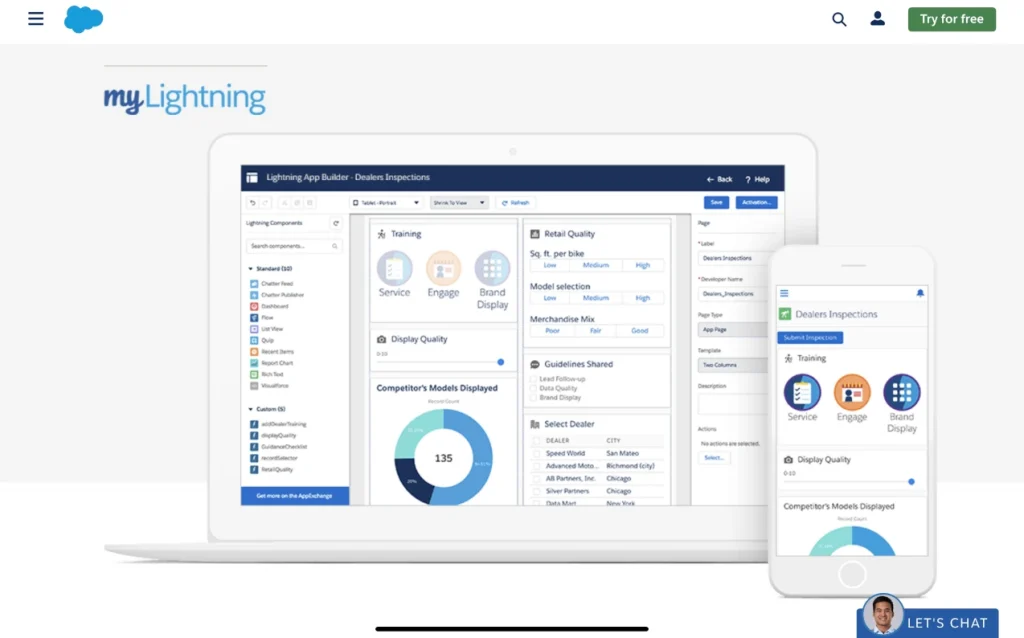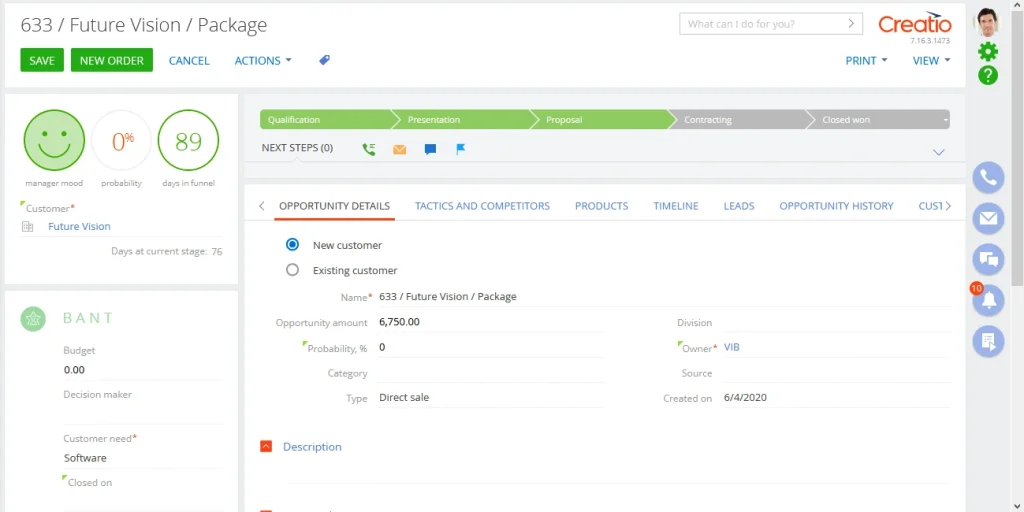Why should you consider low code for SaaS development?
Faster development times
In the digital age, time equals money. By leveraging pre-built modules and templates, low code SaaS tools allow developers to bypass the time-consuming process of creating code from scratch. Instead, they focus on modifying and customizing the existing code to suit specific business requirements. This efficiency in the development process significantly reduces the time to market and keeps businesses operating in fast-paced, competitive environments.
Cost savings
Utilizing low code for SaaS development can reduce the reliance on high-end technical resources such as software engineers or technical consultants. Thus, it removes hefty development costs, which benefits small and medium-sized enterprises to remain competitive through continuous digital innovation with limited budgets.
Explore the advantages and drawbacks of incorporating low code technology in enterprises, and delve into the benefits it offers in this article.
Encourage tech creation for digital transformation
The power of low code SaaS platforms lies in their user-friendly design and approach. These features enable non-technical users to easily navigate the platform, creating and deploying custom applications swiftly and without extensive training or technical knowledge. This ease of use encourages more involvement in the software development process within the organization, promoting a culture of inclusivity and shared ownership.
Greater flexibility and adaptability
Traditional software development methods can be restrictive and slow to respond to changes in market conditions and customer needs. Low code SaaS platforms, on the other hand, offer enhanced flexibility. They provide the ability to quickly modify and customize applications per changing business needs.
Successful story of a low-code SaaS product
Munich Re HealthTech (MRHT), the provider of SMAART, an innovative digital solution for health insurance underwriting and pricing, encountered several challenges with their current system. Scaling is a costly and complex endeavor due to its custom-built nature. Moreover, the system’s user-friendliness fell short of their expectations. Considering their forward-thinking approach to offering SMAART as a scalable service, MRHT recognized the need for a transformative solution.
The low-code solution
MRHT decided to build the new system using a low code solution. They focused on finding a well-established technology compatible with cloud environments, user-friendly, and visually appealing to enhance the overall user experience.
The result
The advantages of this transition were numerous:
- The new SMAART system was delivered within 3-4 months, a timeline made possible due to the efficiency of the low code platform.
- SMAART became a SaaS application, providing insurance companies with enhanced efficiencies and reducing process times from days to minutes.
- The system was cost-effective, reliable, and required minimal maintenance.
- Advanced features, such as data residency requirements, could be managed without writing a single line of code, proving the user-friendly nature of the low-code system.
- Client feedback was overwhelmingly positive, praising the system’s security, scalability, and compatibility with existing technologies.
This successful transition to a low code SaaS application demonstrates the power of this technology in overcoming scaling challenges, reducing costs, and improving usability. MRHT’s experience is a valuable case study for businesses considering SaaS Development.
Steps to build a SaaS with low-code
Building a Software as a Service (SaaS) solution using a low code platform can be a simplified yet systematic process. Below, we’ll discuss the six essential steps to effectively leverage low-code technology for creating a SaaS application:
Step 1: Choose a SaaS market
Market selection determines the features your application should have and the problems it aims to solve. Consider the potential demand, competition, and growth opportunities in the market. Analyze existing solutions and identify gaps in the market where your product could make a difference. The best markets usually have a combination of high demand and low competition.
Step 2: Decide how you monetize your model
Determining your revenue model early on is essential. This decision guides your development process and helps you make strategic choices for your product. Typical SaaS monetization models include:
- Subscription: This is the most common SaaS pricing model, where users pay a regular fee (usually monthly or yearly) for access to the service.
- Freemium: In this model, basic features are free, and advanced features are accessible for a premium fee.
- Usage-based: This model charges customers based on the amount they use for the service.
Step 3: Validate your idea and plan your product roadmap
Before investing time and resources in development, validate your idea to ensure there’s a market for your product. You can do this by conducting surveys, interviewing potential customers, or creating a minimum viable product (MVP) for early feedback.
Once you’ve validated your idea, start planning your product roadmap. This should include your product’s core features, the user experience, and the value proposition for your customers. A well-planned roadmap provides clear directions for development and sets realistic expectations for your team and stakeholders.
Step 4: Choose your low-code tech stack
With so many low code platforms in the market, you might get lost here and there. Each low code platform will have certain strengths, and some might even outweigh others in SaaS development abilities. For examples:
- Creatio is the best platform for Sales & Marketing-related application
- Microsoft PowerApps is best for internal tools
- Salesforces is best for mobile app development
Because of this, consider every feature before the final decisions. Other low code platforms are Outsystems, Mendix, Kisslow, Pega, etc and we have reviewed these low code platforms in detail (pricing, features, best for what).
Also, if you are looking for an open-source low code solution for cost-effective strategy, we also have a list of the best ones on GitHub.
Step 5: Design, development & testing
Design a user-friendly interface that offers a seamless experience. Remember to employ user experience (UX) best practices to ensure the design is intuitive and meets your users’ needs.
Once the design is ready, develop your SaaS product using your chosen low-code platform. Low-code development typically involves dragging and dropping components to create your application. You can freely add new code and make customizations where needed.
Finally, conduct rigorous testing to ensure the application works as expected. This should include functionality testing, usability testing, performance testing, and security testing. Remember to incorporate feedback from testing into the final product.
Our tips: How can startups utilize Low Code?
To build an MVP, of course. Low Code is the cheapest and fastest way to develop an MVP for market validation, pitching and testing. Afterwards, you can easily switch from Low Code to a more stable and secure platform of your own to extensively develop and grow the product.
There’s no limitation with low code platforms. You can visualize your idea immediately!
Step 6: Launch your low-code SaaS product
Before launching, prepare a launch plan outlining your marketing and sales strategies before launching. This could include a website, social media marketing, email campaigns, etc. Also, ensure you have a customer support system to address user issues.
Remember that the launch is just the beginning. Continually monitor user feedback and usage data to make improvements and add new features. SaaS products require continuous development and updates to stay competitive and meet users’ evolving needs.
Building a SaaS product with low code technology can be a game-changer, significantly reducing time-to-market and resource requirements. However, it still requires careful planning, strategic decision-making, and continuous improvement post-launch.
Top low-code SaaS platforms
As businesses look to streamline their operations and become more agile, low code SaaS platforms have come to the forefront. Here are three top players that offer comprehensive solutions:
1. Salesforce Lightning

Introduced in 2015, Salesforce Lightning is an integrated platform quickly gaining popularity among Salesforce developers. Here’s what sets Salesforce Lightning apart:
- Ability to integrate seamlessly with other Salesforce products, such as Sales Cloud, Service Cloud, and Marketing Cloud.
- Enables the construction of end-to-end solutions across various Salesforce products.
- Follows a per-user, per-month subscription pricing model.
However, it’s important to note that Salesforce Lightning doesn’t offer a free plan.
Refer to this article for additional details: A Guiding Light To Leverage Salesforce Low Code Platform
2. Creatio

Started as a CRM platform, Creatio’s low code environment offer robust features for sales and marketing applications. You can build anything from mobile applications, on-premises to cloud-based software with Creatio. Some features of this Low Code SaaS platform:
- Set up integration with SOAP and REST
- Library of ready-to-use composable applications, design elements and widgets
- AI/ ML models to streamline process
- Offer free trial for 14 days
3. Oracle Apex
Known as one of the best low code platforms for SaaS Development, APEX stands out with its scalability and security for mobile apps and webs. Using Oracle’s low code for SaaS, you will get:
- Turn spreadsheet into SaaS Web App with a few clicks
- You can use JavaScript, HTML, CSS, SQL, PL/SQL for customization
- REST Web Services to import/ export any type of data
- Cloud hosting on Oracle Database Cloud services.
4. Microsoft Power Apps
Clarifying as the top leaders on Low Code market by Gartner, Power Apps can rapidly build any applications for internal use without limitation. Other than Power Apps, you can also leverage Power BI for data visualization, Power Pages to create interactive pages and Power Automate to increase performance with services bots. Detailed features of Power Apps include:
- Pre-built and Custom API models.
- Ability to integrate with 400 connectors to streamline data flow.
- 4-level security standards
We also have analyzed the features and performance of Power Platform in this article!
5. Mendix
Originating in 2005, Mendix is a seasoned player in the low code SaaS arena. It empowers developers to build web and mobile applications without extensive coding. Here are some notable characteristics of Mendix:
- Rapid application development capabilities
- Cloud-based platform
- AI-assisted development and deployment features
- Offers a free community edition alongside its basic, standard, and premium editions, providing versatile options to cater to different needs
6. Kissflow

Established in 2013, Kissflow focuses on business process management (BPM) and workflow automation. Some of this low code SaaS builder’s key attributes include:
- Specialization in streamlining workflows and automating business processes
- Utilized by thousands of organizations worldwide
- Comes with different pricing options, including a small business edition, a corporate edition, and an enterprise edition
Unfortunately, Kissflow doesn’t offer a free plan.
Certified as a gold partner of Microsoft in Low Code Development Service, Synodus provide extensive and custom solution for your business’ performance.
From internal tools to SaaS products, our well-versed experts provide in-depth consultation and seamless execution across your operation. View our portfolio and Talk with our team!
What you should be aware of when using low-code for saas development?
While low-code platforms offer numerous benefits, they also present particular challenges you must be mindful of during SaaS development. Let’s delve into it:
- Risk of Vendor Lock-in: This issue arises when you rely on a single vendor for your software needs. To mitigate this, choose a flexible low-code platform that generates standardized, editable code, and make sure to review the vendor’s policy to understand if they restrict modifications to your application once you stop using their service.
- Promotion of Shadow IT: Unauthorized use of low-code platforms, or shadow IT, can introduce unnecessary risks and resource wastage. Regular monitoring and employee education on the dangers of shadow IT can help manage this risk.
- Limited Customization: With a low-code platform, you may face limitations on customization, often requiring you to resort to custom coding. Ensure your development team can integrate any additional custom code with the platform’s source code. Before committing to a low-code platform, understand its customization limitations, as integrating custom code might be more costly than creating a customized solution from scratch.
- Low-code Complexity: Low-code platforms are intended to simplify application development, but they still require a foundational understanding of coding. They’re less complex than traditional coding, allowing non-developers to create applications with minimal programming skills, but some knowledge of programming languages can still be beneficial. Don’t underestimate the technical skills needed to fully utilize a low-code platform.
Discover more: Prep Yourself With 10 Low Code Challenges (+Tips To Solve)
Wrapping up
Building a SaaS product with low code technology streamlines the development process, making it accessible to a broader range of creators. Although it reduces the complexity of traditional software development, it requires strategic planning and execution. Choosing the right market, monetization model, low code SaaS platform, and continuously iterating based on user feedback are key factors for success. With the right approach, low code can indeed be the driving force behind your following innovative SaaS development.
More related posts from Low Code blog you shouldn’t skip:
How useful was this post?
Click on a star to rate it!
Average rating / 5. Vote count:
No votes so far! Be the first to rate this post.




